EXTREMELY RARE! WWII "SECRET" May 29th, 1945 Battle of Okinawa Rear "Commander of Amphibious Group Five" Admiral Jerauld Wright Combat Intelligence Report (5 Pages)
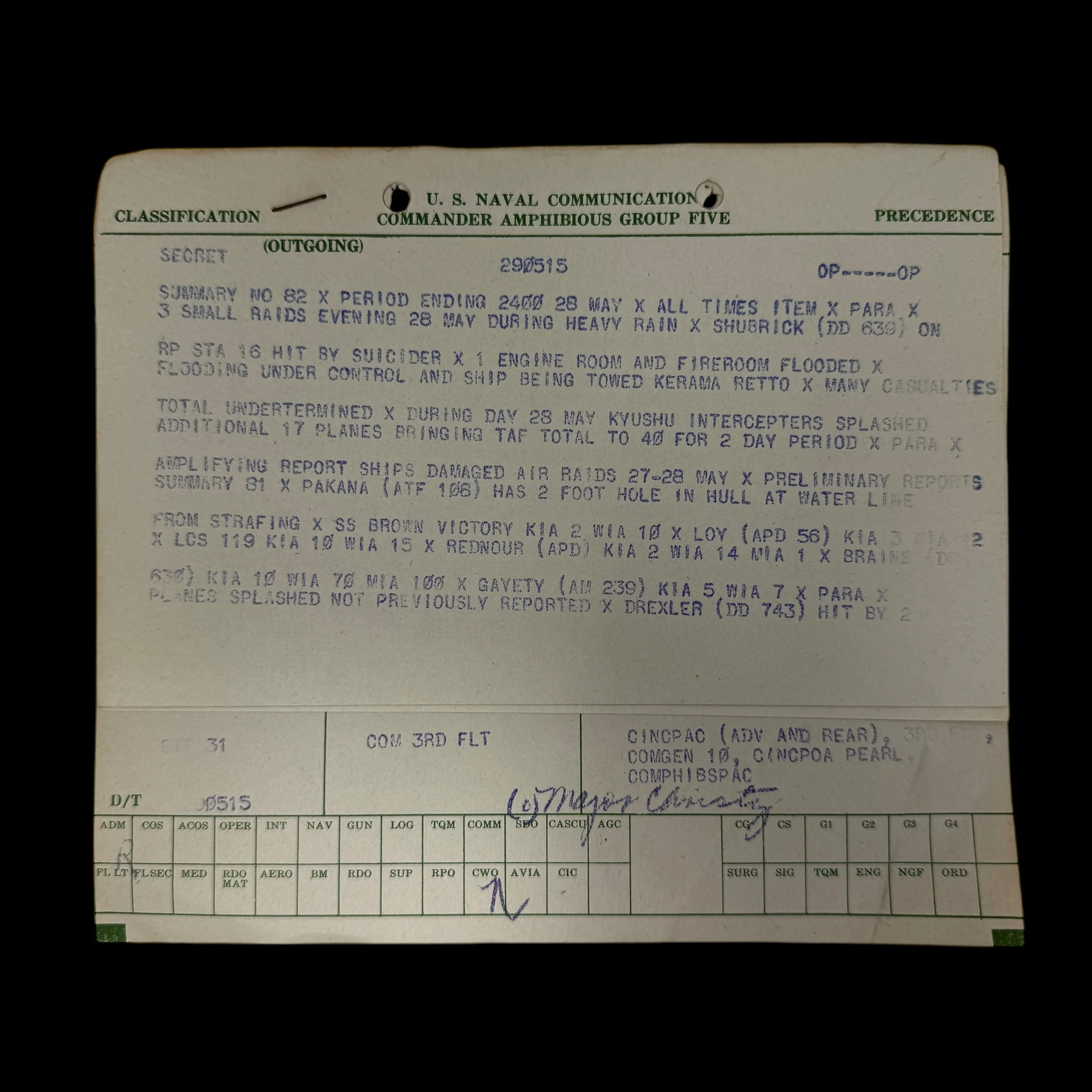


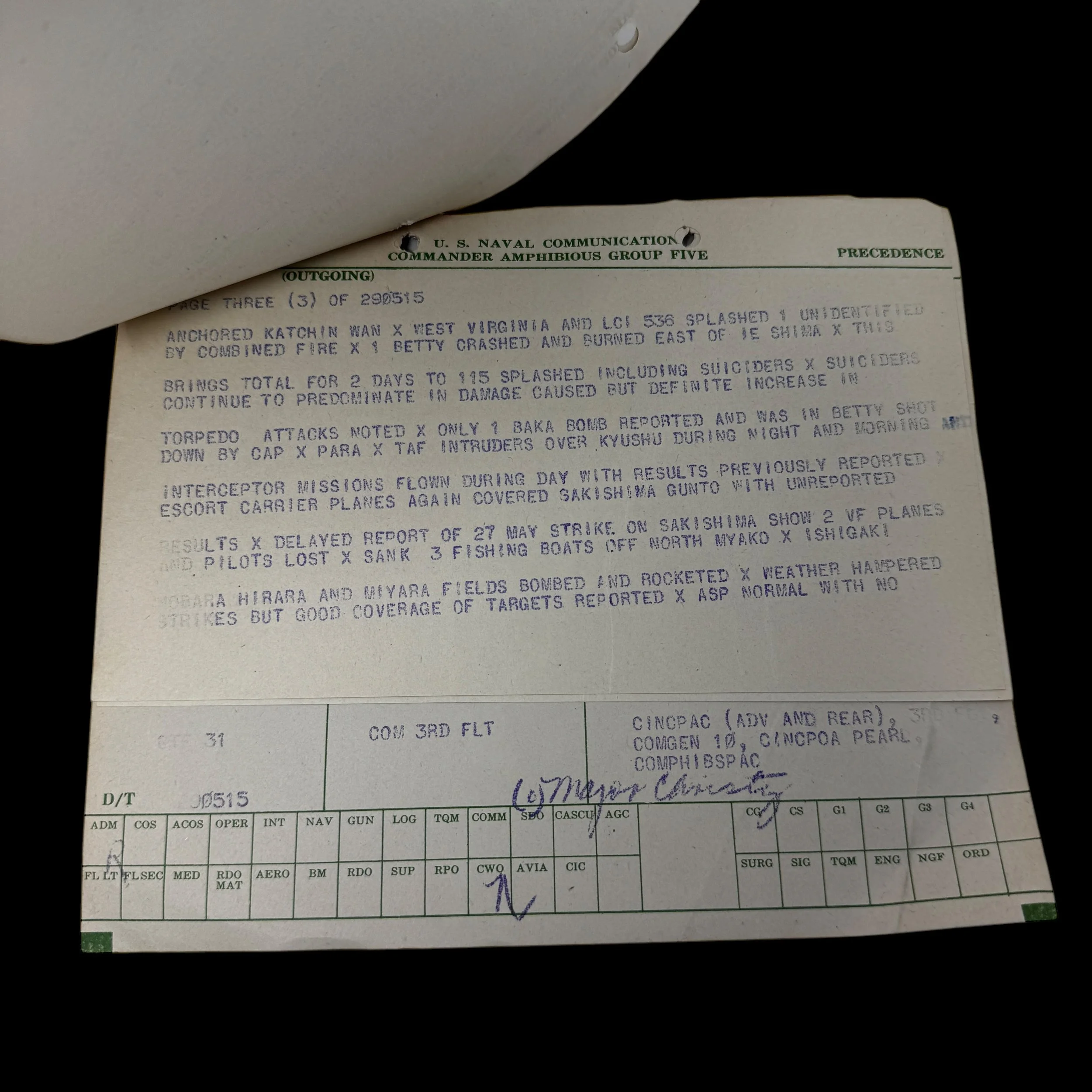

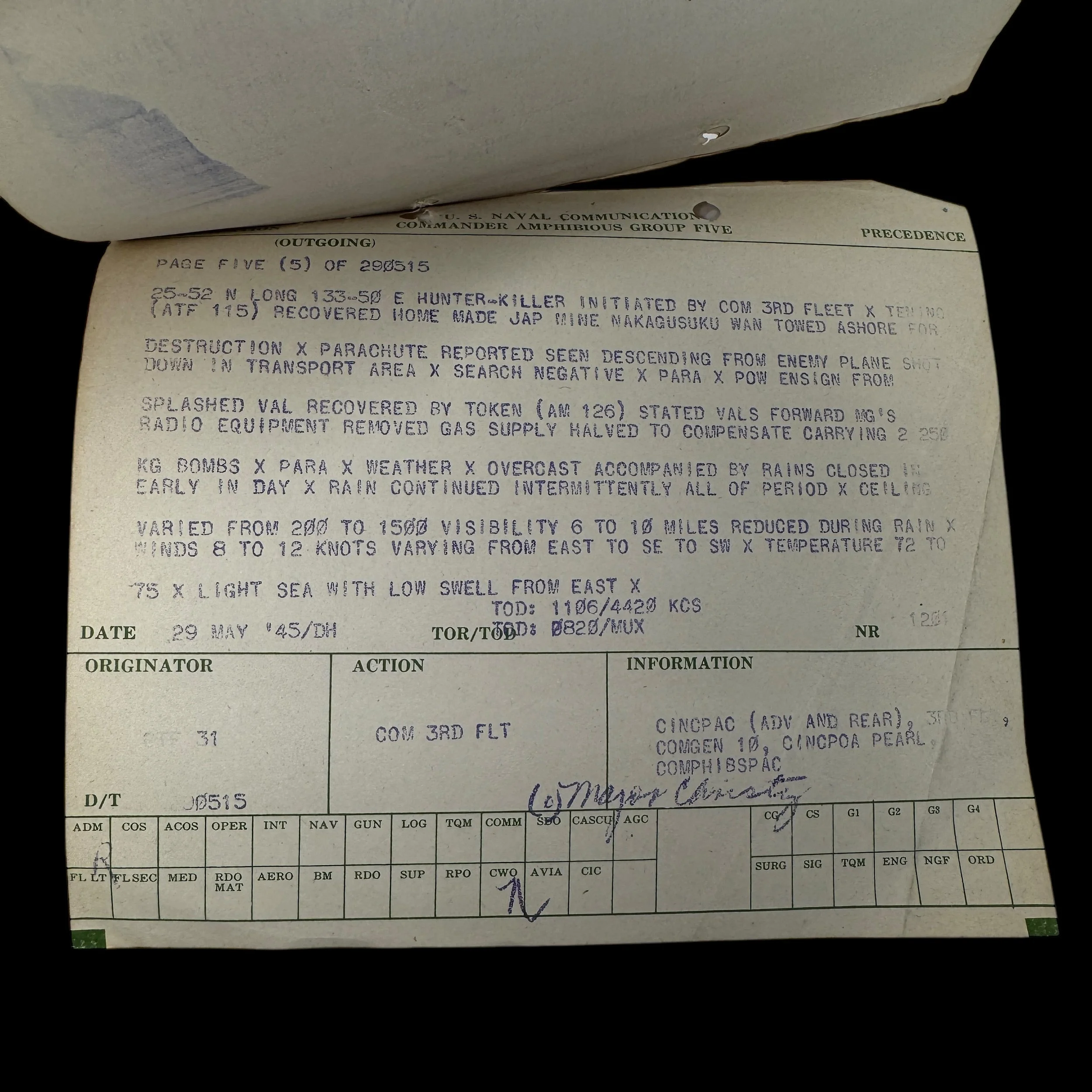
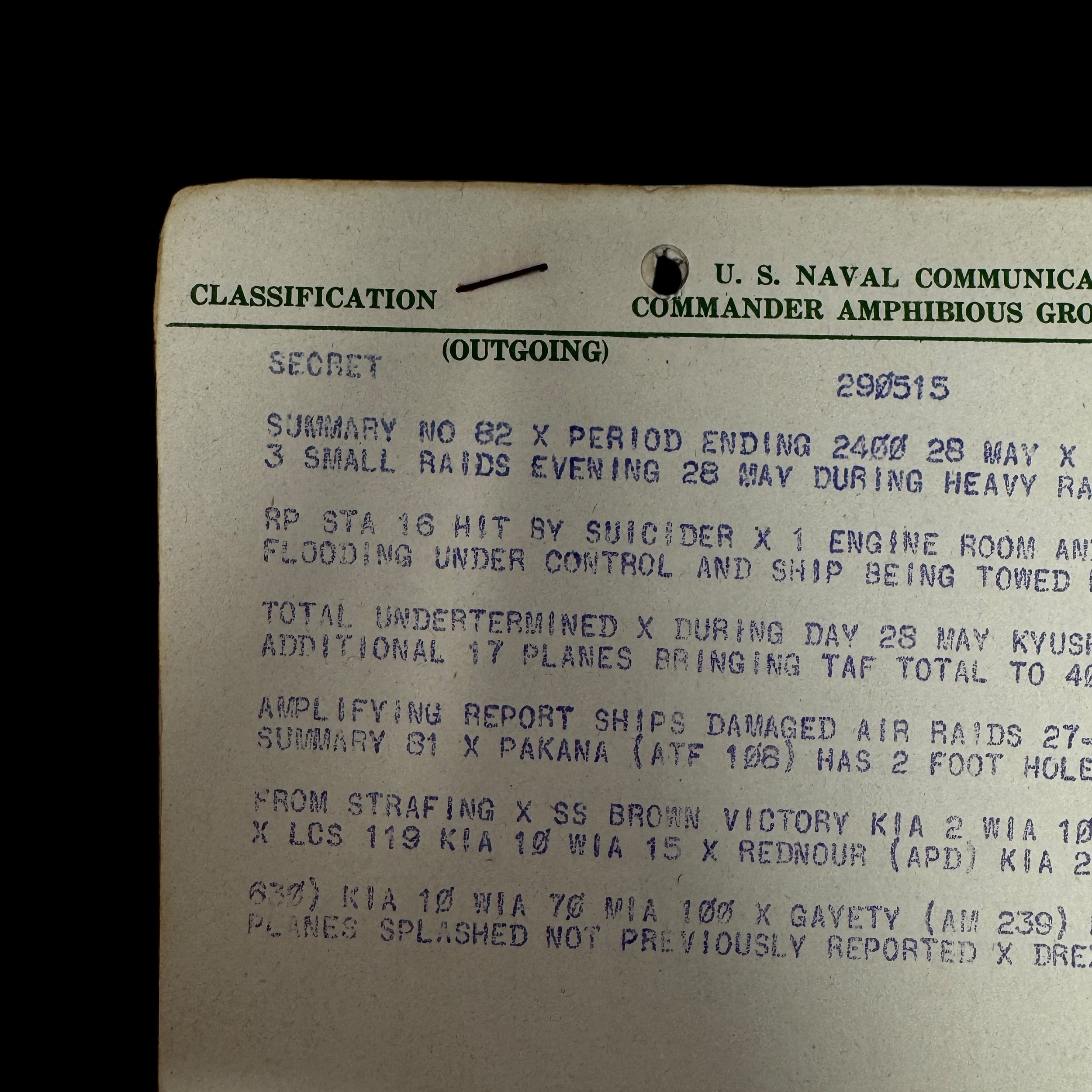

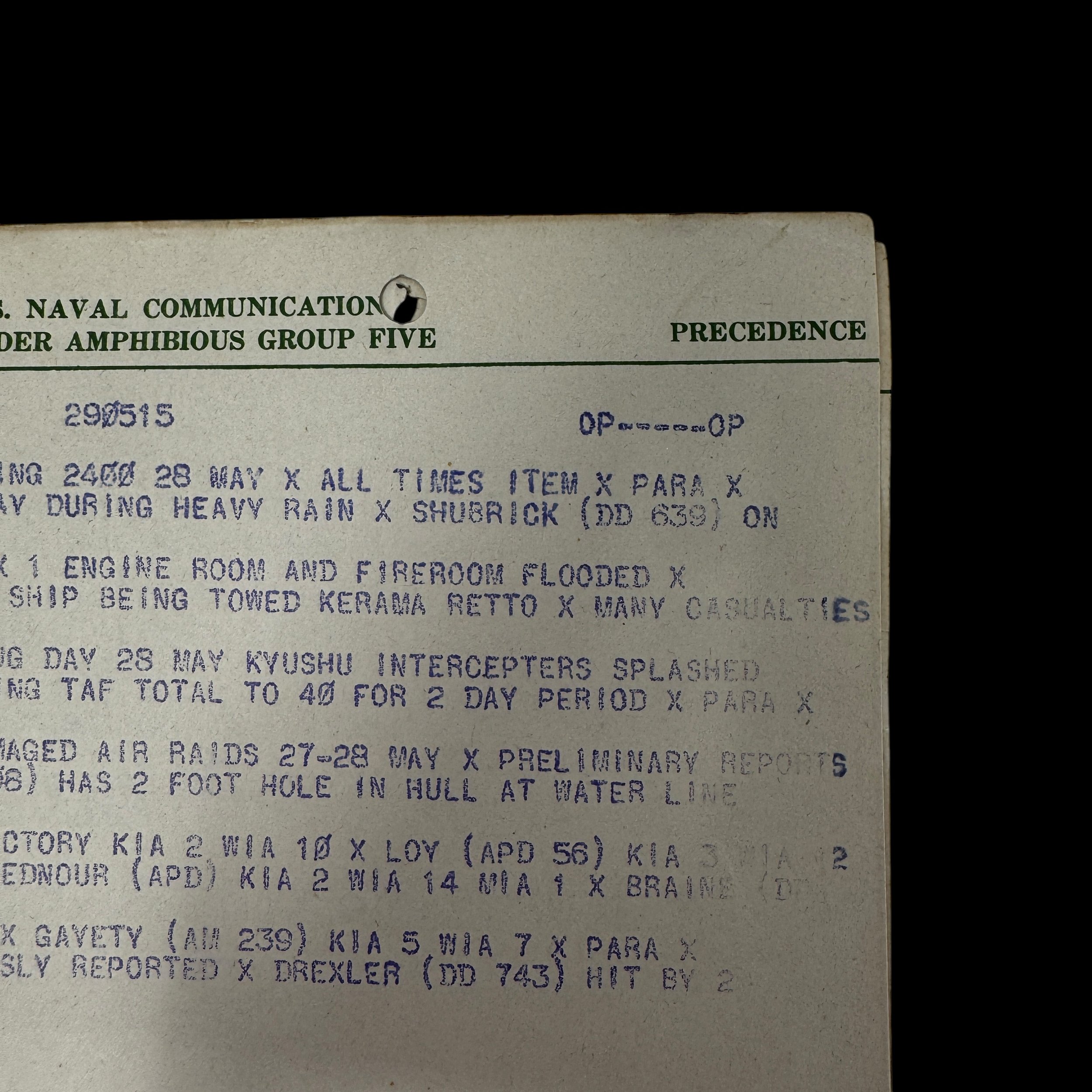
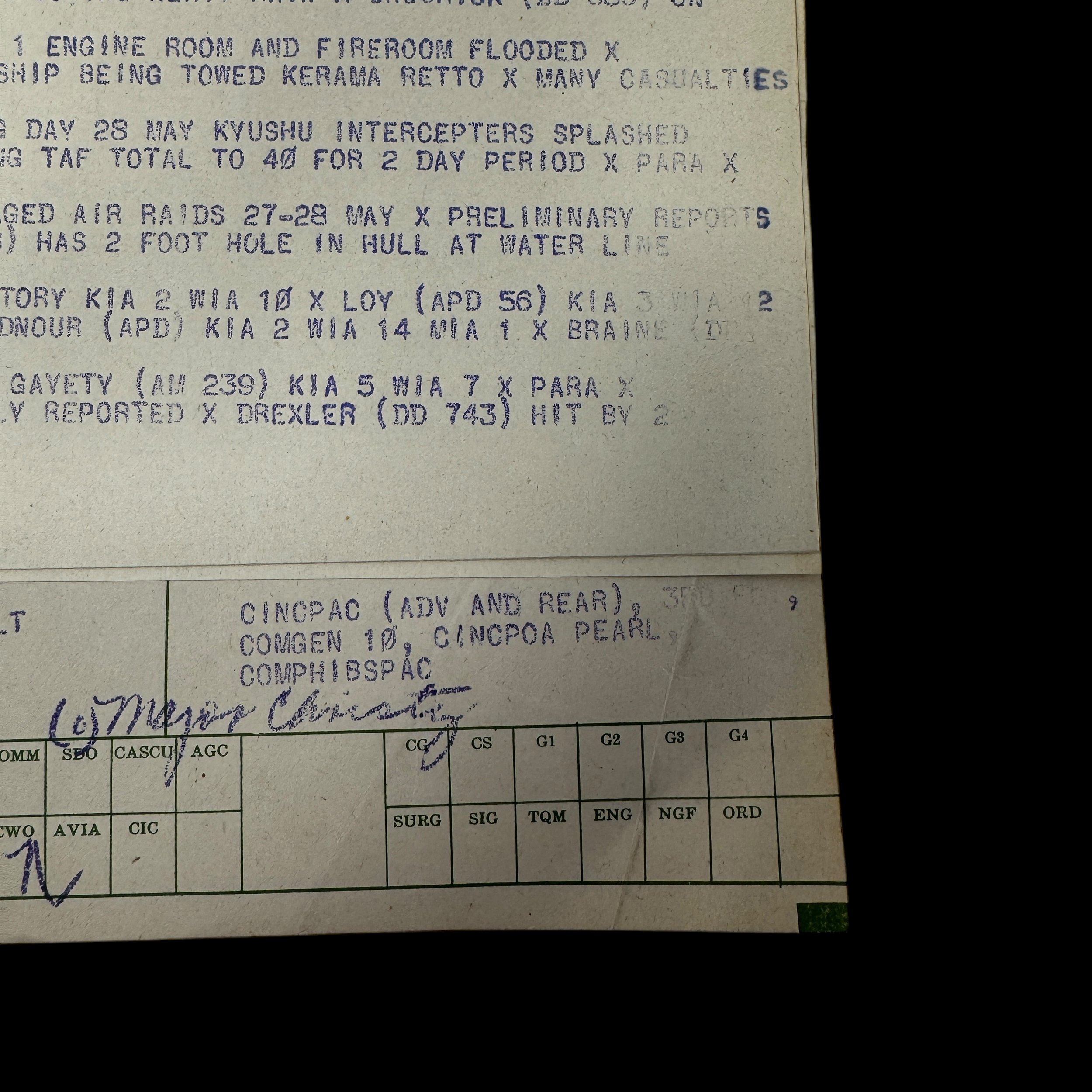


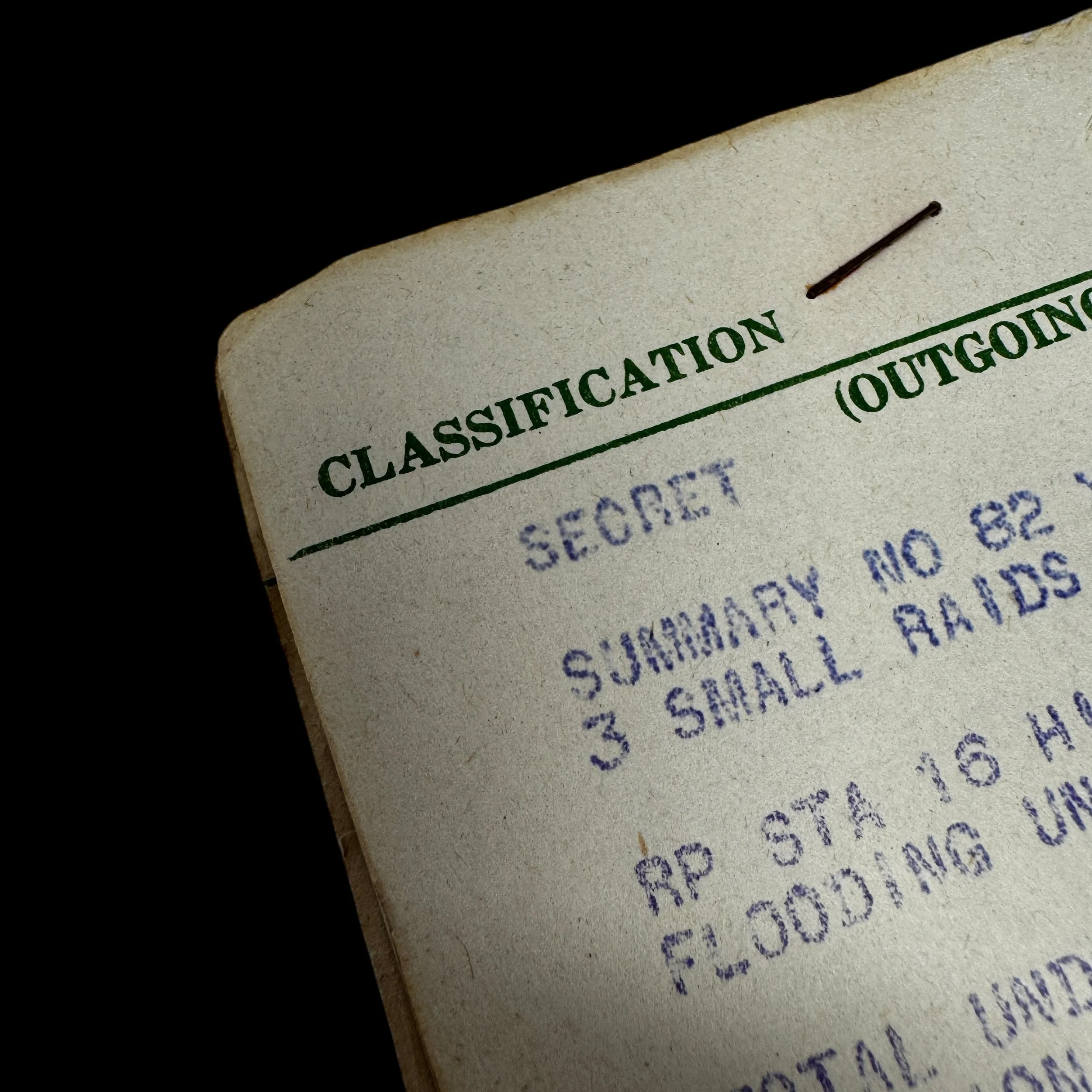



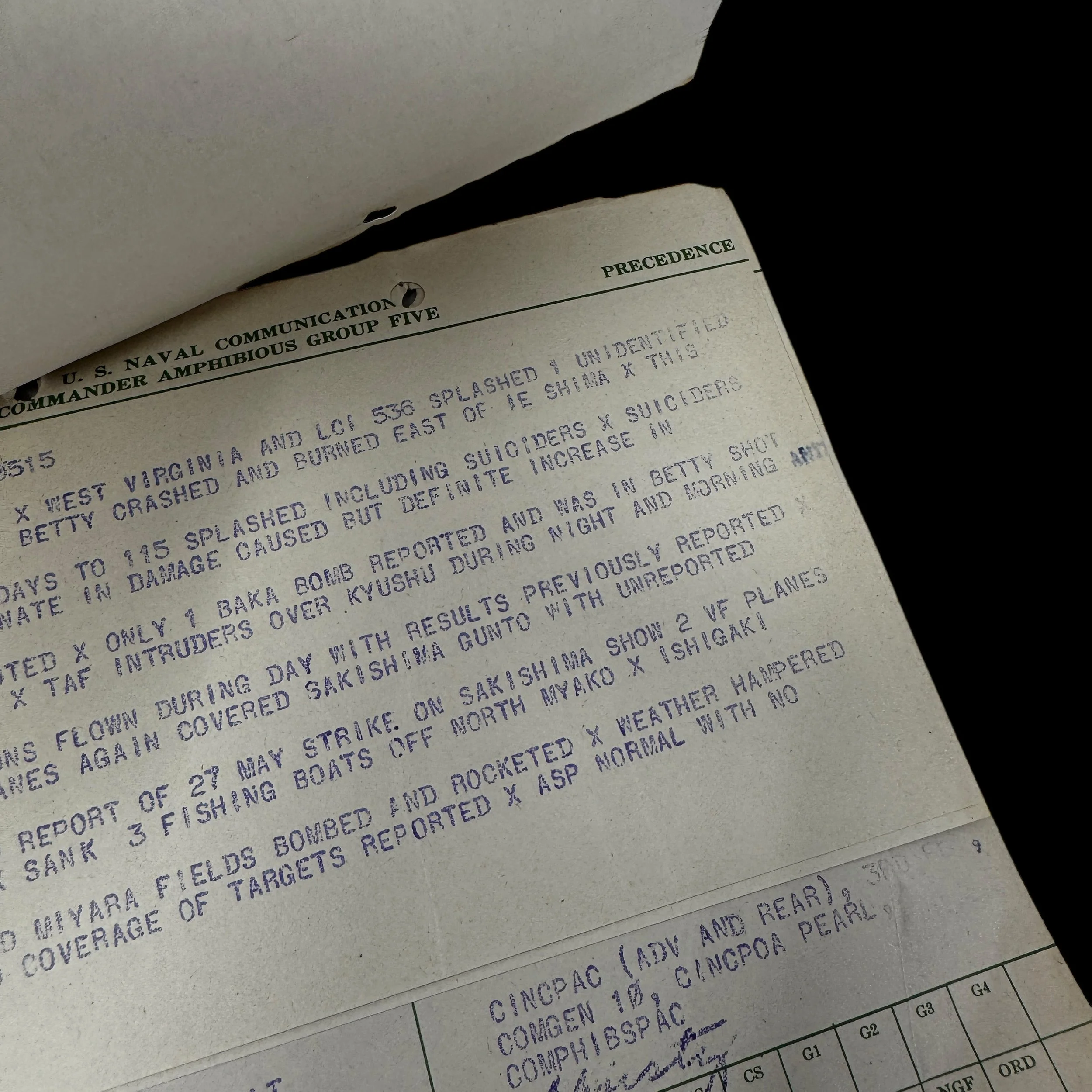
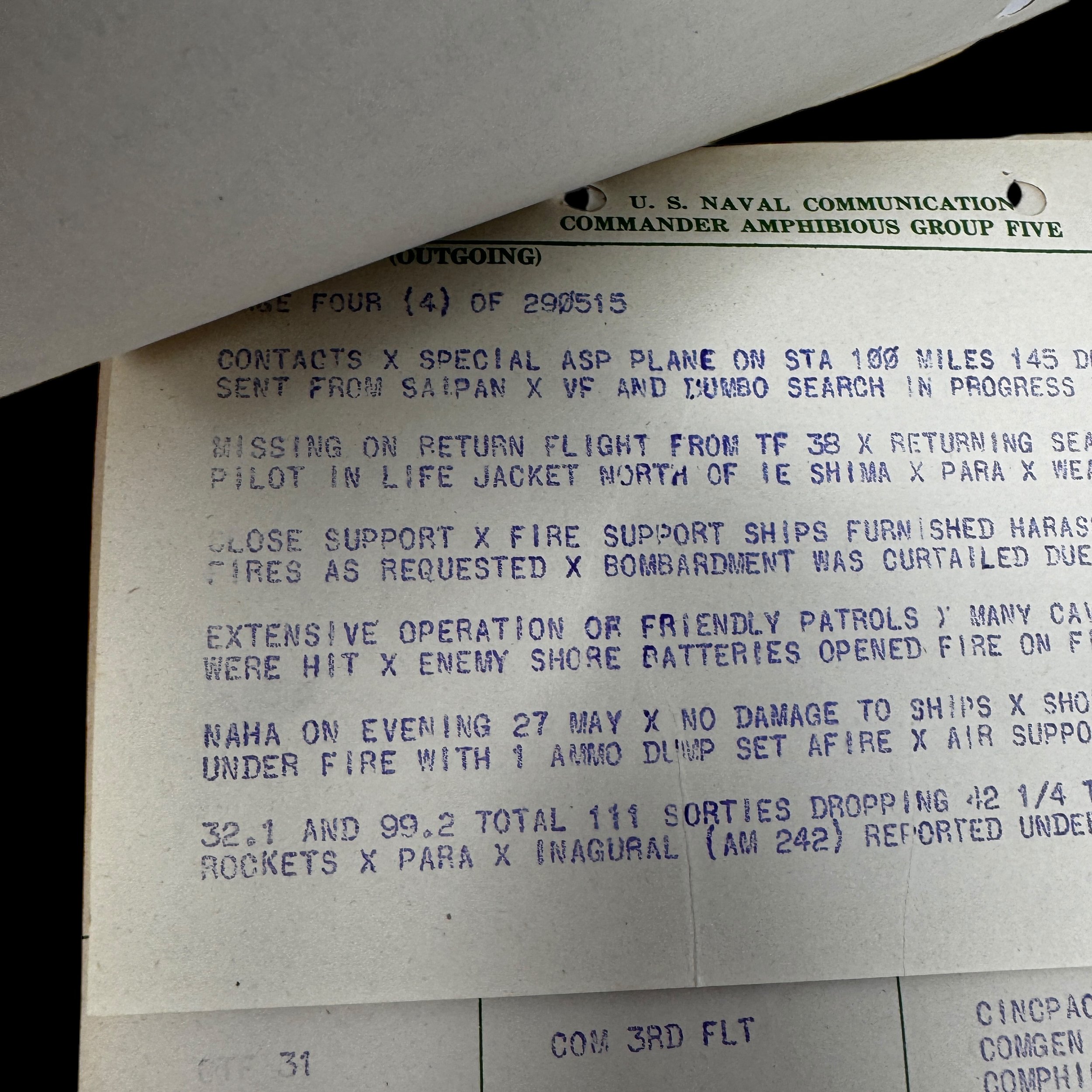



EXTREMELY RARE! WWII "SECRET" May 29th, 1945 Battle of Okinawa Rear "Commander of Amphibious Group Five" Admiral Jerauld Wright Combat Intelligence Report (5 Pages)
Comes with C.O.A.
Dated May 29th, 1945, this secret World War II Battle of Okinawa Pacific Theater combat report provides a detailed account of the impact of Japanese kamikaze attacks on U.S. naval forces operating off the coast of Okinawa. As one of the most intense phases of the battle, this period saw relentless waves of enemy aircraft targeting American warships in an effort to disrupt naval operations and prevent the continued advance of Allied forces. The report extensively documents the damage sustained by multiple U.S. naval vessels, along with the resulting casualties, highlighting the severity of the attacks and the resilience of the fleet in the face of continued aerial assaults.
The report details the effects of coordinated kamikaze strikes, which inflicted significant structural damage to several ships, leading to fires, loss of operational capabilities, and emergency response efforts to maintain the integrity of the fleet. Despite the heavy toll, defensive measures successfully intercepted and neutralized numerous incoming enemy aircraft before they could reach their targets.
In addition to the kamikaze attacks, the report provides intelligence on torpedo strikes launched by Japanese Mitsubishi G4M "Betty" bombers. It describes multiple torpedoes narrowly missing their intended targets, while others were successfully evaded by evasive maneuvers and defensive countermeasures from escorting destroyers and cruisers. The presence of enemy reconnaissance aircraft and coordinated aerial attacks underscored the ongoing threat to the naval task force as it continued operations in the region.
Casualty reports included in the document detail both killed and wounded personnel across multiple named U.S. naval vessels. Medical teams aboard affected ships worked rapidly to treat the injured while damage control crews engaged in extensive repair efforts to restore operational capacity. The resilience of the fleet allowed U.S. forces to maintain a strong presence in the Okinawa combat area, continuing their mission despite ongoing threats from air and sea.
This intelligence report, produced in the midst of the Battle of Okinawa, offers a critical firsthand account of the challenges faced by the U.S. Navy in the Pacific Theater. It underscores the determination and sacrifice of American sailors and provides valuable insights into the tactical measures employed to counter one of the most formidable threats encountered during the war.
5 PAGES
This extremely rare and museum-grade WWII artifact is a U.S. Naval Communication Battle of Okinawa combat intelligence report for Rear Admiral Jerauld Wright - Commander of Amphibious Group Five (a newly created unit of the Amphibious Forces, U.S. Pacific Fleet, commanded by Vice Admiral Richmond Kelly Turner).
Dated May 29th, 1945 this SECRET U.S.N. Ryukyu Islands (Operation Iceberg) intelligence report was produced on Rear Admiral Jerauld Wright's flagship USS Ancon (AGC-4). It provided intelligence to Rear Admiral Jerauld Wright during his command of the Task Group during the Invasion of the Ryukyu Islands - Battle of Okinawa - Operation Iceberg.
This intelligence report provided Rear Admiral Jerauld Wright - Commander of Amphibious Group Five with intelligence of the Pacific Theater operations such as U.S. Marine advances, POW captures, MIA reports, Japanese strongholds, divisional movements, retreats, resistance pockets, airstrikes reports, etc.
Rear Admiral Jerauld Wright was awarded a Bronze Star, with a combat "V" device, for his leadership as the commander of Task Group 51.2 during Operation Iceberg.
Amphibious Group Five:
In November 1944, Rear Admiral Wright took command of Amphibious Group Five, a newly created unit of the Amphibious Forces, U.S. Pacific Fleet, commanded by Vice Admiral Richmond Kelly Turner. Wright's group would be involved in the invasion of the Ryukyu Islands (Operation Iceberg), the island of Okinawa being the key objective. Once taken, U.S. forces would use Okinawa as a staging area for the eventual invasion of Japan, and a base for the B-29 Superfortress bombers of the U.S. Seventh Air Force to attack the Japanese home islands.[ Amphibious Group Five would transport the 2nd Marine Division, Major General Thomas E. Watson, USMC, commanding, with Wright flying his flag from USS Ancon (AGC-4).
For Operation Iceberg, Wright's force was designated Demonstration Group Charlie (Task Group 51.2), whose mission was to serve as a decoy force working in conjunction with the Southern Attack Force (Task Force 55) commanded by Rear Admiral John L. Hall while the Western Islands Group (Task Group 51.1) under Rear Admiral Ingolf N. Kiland and the 77th Infantry Division secured Kerama Retto and other offshore islands before landing at Ie Shima. Task Group 51.2 would subsequently serve as a floating reserve for the U.S. Tenth Army (Task Force 56), commanded by Lieutenant General Simon B. Buckner, USA, before returning to Saipan.
Wright was ordered to Pearl Harbor to begin planning the invasion of the Japanese home islands, which would begin with Operation Olympic, the invasion of the southern island of Kyūshū. Wright's Amphibious Group Five would be part of the 5th Amphibious Force, commanded by Vice Admiral Harry W. Hill, which would land the V Amphibious Corps (VAC) on the west coast in the Kaminokawa – Kushikino area. Amphibious Group Five would consist of four old battleships, ten cruisers, fourteen destroyers, and seventy-four support craft. However, Operation Olympic and the follow-up invasion of Honshū (Operation Coronet) were cancelled following the dropping of the atomic bombs on Hiroshima and Nagasaki. Rear Admiral Jerauld Wright was awarded a Bronze Star, with a combat "V" device, for his leadership as the commander of Task Group 51.2 during Operation Iceberg.